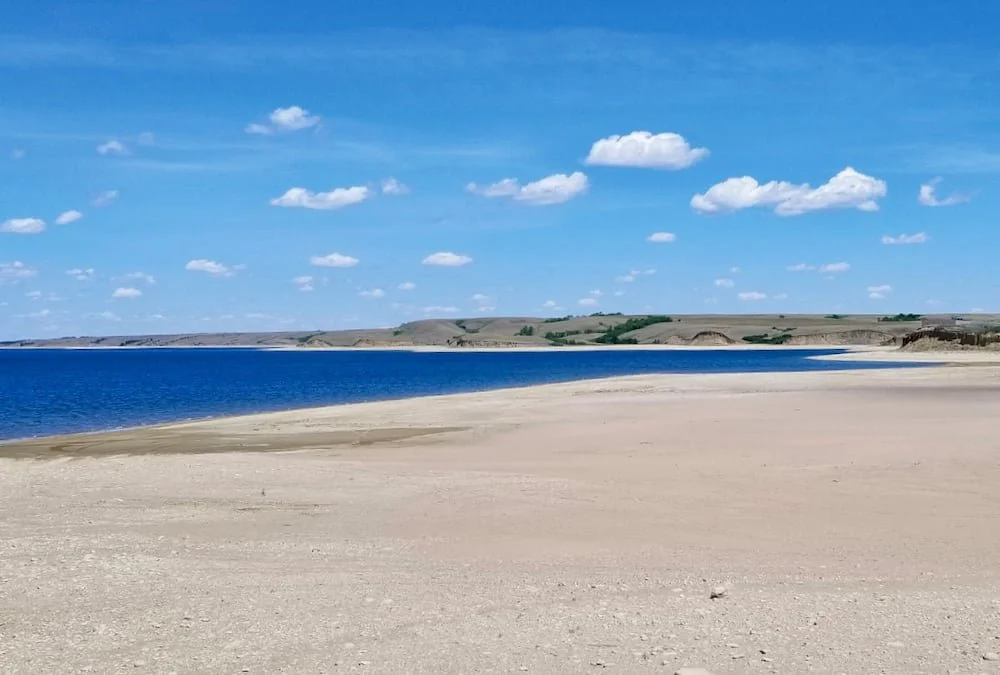The City of Saskatoon has partnered with the University of Saskatchewan for a pilot project aimed at better understanding the debris and pollution that gets into the South Saskatchewan River. Litter and pollutants enter storm drains on city roads and streets, travelling underground and eventually ending up in the river. Saskatoon Water director Russ Munro said the project will use trash traps to apprehend the debris.
Are the reservoir dog days ending?
In 1967, when the Gardiner Dam backed up the South Saskatchewan River to create the 200-km-long Lake Diefenbaker in the middle of Saskatchewan, the plan was to irrigate 500,000 parched acres. To this day, the giant T-shaped lake — named after Saskatchewan politician and Canada’s 13th Prime Minister, John George Diefenbaker — irrigates only 100,000 to 150,000 acres. “The Dief” is, one might say, an untapped resource, a ’60s-era feat of engineering stuck in vaporization mode. (It is said the lake loses more water to evaporation each year than it gives up for crop watering.)
Riverhurst Ferry in Sask. beached indefinitely because of low water levels
Spring is well underway in Saskatchewan, but one of the province's busiest ferries still hasn't been able to open. The Riverhurst Ferry, located northwest of Moose Jaw, typically transports about 30,000 vehicles annually over the South Saskatchewan River, according to the Ministry of Highways, which operates the vessel. But water levels are too low for it to begin operations. Levels in Lake Diefenbaker are about a metre-and-a-half below normal for this time of year, according to a spokesperson for the Ministry of Highways. Diefenbaker is a human-made lake, located north of the Riverhurst Ferry and fed by the South Saskatchewan River.
Scientist sounds water crisis alarm
The megadrought affecting the western United States has prompted a scientist to warn that Canada’s prairie provinces need to better plan how water is used across the entire Saskatchewan river system. “A water expert from California we had up here a few years ago said that Alberta and Saskatchewan reminded him of California and Arizona around 1912,” said John Pomeroy, the Canada Research Chair in Water Resources and Climate Change at the University of Saskatchewan. “We’re still getting by OK, we have pretty loose agreements, everybody’s getting along, it’s fine – but we have trouble ahead.”
What’s in the water? USask grad student investigates environmental threat of contaminants in Saskatoon stormwater
University of Saskatchewan (USask) College of Engineering graduate student Hayley Popick and her research team are investigating how contaminants generated from the City of Saskatoon may be affecting the water supply and ecosystems of the South Saskatchewan River. “Stormwater can be as polluted as untreated wastewater or sewage when it enters our natural water bodies,” said Popick.
'An abomination': Sask. water expert warns of contamination following Alberta's coal policy changes
Alberta's plan to allow for open-pit coal mining in the Rocky Mountains could be a serious threat to Saskatchewan's water supply, says the director of the Global Water Futures Project at the University of Saskatchewan. "For a water scientist to see this happening, it's just an abomination to have these types of developments suggested in the headwaters of the rivers that supply drinking water and the economy for most of Saskatchewan," John Pomeroy told CBC's Blue Sky. Last spring, the Alberta government revoked a 1976 policy that blocked open-pit coal mining on the eastern slopes and peaks of the Rockies.
Potential damage is being downplayed in latest Alberta oil pipeline leak
Less than two months after a spill at an oil pipeline dumped 900,000 litres of contaminated water–so called “produced water”–in northwestern Alberta, there’s been another spill in the oil-rich province. The latest spill, reported at 2 p.m on Christmas Day by a local landowner, occurred near Drayton Valley, a community about 130 kilometres southwest of Edmonton, the province’s capital city. Drayton Valley was the site of a spill–the result of a ruptured pipeline–that dumped 40,000 litres of crude oil into a local creek in August, 2019.
Pipeline spills about 400,000 litres, some enters North Saskatchewan River
Contaminated water that leaked from an oilfield pipeline on Christmas Day has entered the North Saskatchewan River but has had no detectable impact on it, says a spokesman for Calgary-based oil and gas producer ARC Resources Ltd. The spill was reported by a local landowner at about 2 p.m. last Friday, said Sean Calder, ARC's vice-president of production, in an interview on Tuesday. "We had guys on site within about an hour and then the pipeline was shut in by 4 p.m., I believe," he said.









